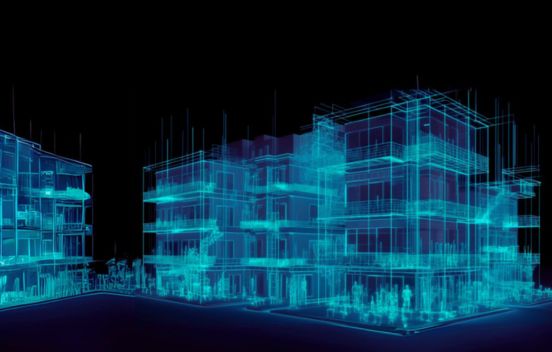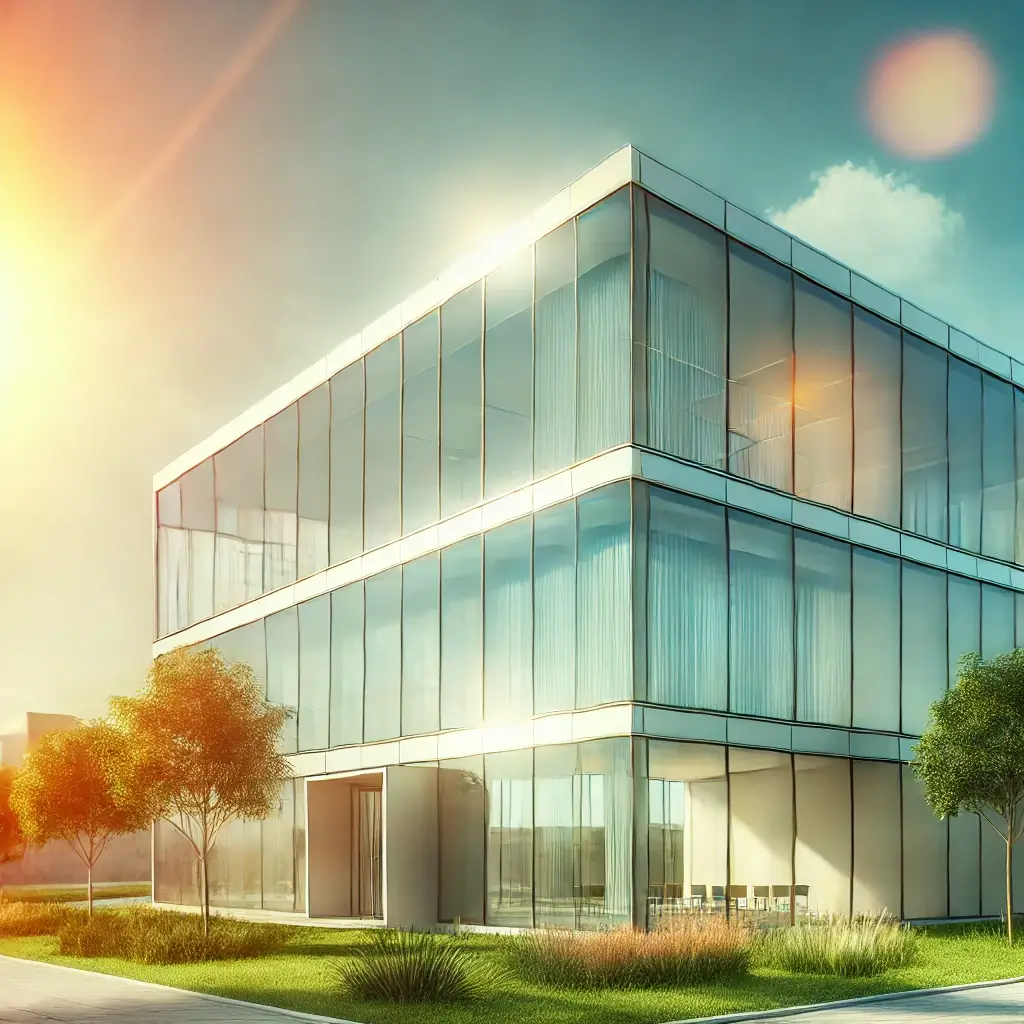THIS ARTICLE AT A GLANCE
CONTACT ETS
If you have any questions or would like to discuss further what you should be doing, ETS is here and willing to help.
Call 0117 205 0542
Email enquiries@energy-ts.com
Submit a contact form
CHECK OUR SERVICES
Temporary Building Shutdowns: An Energy Management Perspective

In these difficult times, businesses are being forced to adapt and adjust their day-to-day strategies. For some, this involves making temporary staffing arrangements and adjustments to how they operate their buildings, shutting some of their properties down in the short term.
When shutting down a building, whether partially or fully, it’s important to ensure you do it appropriately and in a way that minimises any costs and energy spend. Two key points to consider are how long the shutdown likely to the last for – will it be long-term or short-term? – and how many people will continue to occupy the building. Undertaking a full shutdown of a property when it’s not needed can make it more difficult and time-consuming to reactivate it when we’re through this current period.
There are several things that property managers can do to ensure their buildings are shutdown appropriately and energy use is minimised to save cash during this period. You can find our recommendations below.
Amend building services scheduling
We recommend amending building services plant and equipment schedules to align more closely with your amended operating hours. This should be done through the BMS (Building Management System) wherever possible, ensuring that all equipment is put into ‘auto’ and not left on ‘hand’ settings. This will ensure that the equipment is appropriately controlled through the BMS and aligned with updated scheduling.
Reduce any heating and air conditioning
You should reduce set points for space heating and introduce setbacks for out of hours occupancy, though you shouldn’t turn off boilers and heating equipment off fully. There will need to remain some level of cycling for building services equipment to allow for frost protection and building fabric protection. You’ll also need to take into account any partial occupancy throughout the shutdown period.
Much of the same applies to air conditioning and ventilation. Ventilation equipment should be reduced, but not turned off completely. Consideration should also be given to the use of reduced and localised ventilation through fan coil units if possible, to reduce any reliance on centralised whole-building space conditioning.
Turn off lighting and small power items where possible
Check any and all lighting that isn’t controlled by the BMS and turn off where possible, but be sure to maintain any lighting levels required to ensure safety in certain environments – for example, external lighting in urban areas as appropriate. Lighting should be reduced as much as possible, but maintaining safety while doing so is key.
Building managers should also ensure that once the building is vacated, all computers, screens and audio-visual equipment are fully turned off and not left in sleep mode. Similarly, all small power items should be turned off where appropriate and not left in hibernate.
Maintain critical water systems
It’s also crucial to take the right approach to your water systems when shutting down your building. Critical systems should be maintained, and operation kept in-line with the Health & Safety Executives Approved Code of Practice L8 to mitigate the risk of legionella upon building reactivation.
Continue to track energy consumption
It’s important to align your updated temporary strategy with any energy management software or external bureau that is being used by the building. Any alerting parameters for excessive consumption should be adjusted to align with the new operational profile.
This will enable you to have a good handle on any potential areas with excessive consumption during a shutdown or lower occupancy period. Additionally, it’s also a great way to gain insight into your baseline consumption within the property. This will then enable you to make better energy management decisions when the building comes back into full operation.
Final thoughts
If you are looking for an energy management system that is tailored to your business needs, ETS can provide you with 25 years of experience in dramatically improving energy efficiency and reducing environmental impacts. Whether your businesses have individual assets or large international portfolios, ETS can assist you in saving substantial amounts of money while significantly reducing your carbon performance.
To discuss your requirements, get in touch. You can contact us by calling 0117 205 0542 or drop us an email at enquiries@energy-ts.com.
In these difficult times, businesses are being forced to adapt and adjust their day-to-day strategies. For some, this involves making temporary staffing arrangements and adjustments to how they operate their buildings, shutting some of their properties down in the short term.
When shutting down a building, whether partially or fully, it’s important to ensure you do it appropriately and in a way that minimises any costs and energy spend. Two key points to consider are how long the shutdown likely to the last for – will it be long-term or short-term? – and how many people will continue to occupy the building. Undertaking a full shutdown of a property when it’s not needed can make it more difficult and time-consuming to reactivate it when we’re through this current period.
There are several things that property managers can do to ensure their buildings are shutdown appropriately and energy use is minimised to save cash during this period. You can find our recommendations below.
Amend building services scheduling
We recommend amending building services plant and equipment schedules to align more closely with your amended operating hours. This should be done through the BMS (Building Management System) wherever possible, ensuring that all equipment is put into ‘auto’ and not left on ‘hand’ settings. This will ensure that the equipment is appropriately controlled through the BMS and aligned with updated scheduling.
Reduce any heating and air conditioning
You should reduce set points for space heating and introduce setbacks for out of hours occupancy, though you shouldn’t turn off boilers and heating equipment off fully. There will need to remain some level of cycling for building services equipment to allow for frost protection and building fabric protection. You’ll also need to take into account any partial occupancy throughout the shutdown period.
Much of the same applies to air conditioning and ventilation. Ventilation equipment should be reduced, but not turned off completely. Consideration should also be given to the use of reduced and localised ventilation through fan coil units if possible, to reduce any reliance on centralised whole-building space conditioning.
Turn off lighting and small power items where possible
Check any and all lighting that isn’t controlled by the BMS and turn off where possible, but be sure to maintain any lighting levels required to ensure safety in certain environments – for example, external lighting in urban areas as appropriate. Lighting should be reduced as much as possible, but maintaining safety while doing so is key.
Building managers should also ensure that once the building is vacated, all computers, screens and audio-visual equipment are fully turned off and not left in sleep mode. Similarly, all small power items should be turned off where appropriate and not left in hibernate.
Maintain critical water systems
It’s also crucial to take the right approach to your water systems when shutting down your building. Critical systems should be maintained, and operation kept in-line with the Health & Safety Executives Approved Code of Practice L8 to mitigate the risk of legionella upon building reactivation.
Continue to track energy consumption
It’s important to align your updated temporary strategy with any energy management software or external bureau that is being used by the building. Any alerting parameters for excessive consumption should be adjusted to align with the new operational profile.
This will enable you to have a good handle on any potential areas with excessive consumption during a shutdown or lower occupancy period. Additionally, it’s also a great way to gain insight into your baseline consumption within the property. This will then enable you to make better energy management decisions when the building comes back into full operation.
Final thoughts
In short, there’s a lot of things that can be done to minimise energy usage while maintaining building integrity and quality during a shutdown – the above represent some of the key considerations.
For additional guidance, we recommend the Building Engineering Services Association’s SFG30: Mothballing and Reactivation, which provides good holistic guidance on this topic.
If you have any questions or would like to discuss further what you should be doing, ETS is here and willing to help. You can contact us by calling 0117 205 0542, emailing us at enquiries@energy-ts.com or you can submit a contact form.
Related Article
8 Ways Businesses Can Reduce Energy Use in the Workplace This Winter
Discover how to comply with ESOS Phase 4 and unlock energy-saving opportunities for your business. This guide explains the requirements, highlights key deadlines, and provides actionable strategies. Learn how energy audits, tailored action plans, and expert support can reduce costs, improve efficiency, and align your organisation with sustainability goals.
ESOS Action Planning: Complying with Phase 4 and Implementing Energy Saving Strategies
Discover how to comply with ESOS Phase 4 and unlock energy-saving opportunities for your business. This guide explains the requirements, highlights key deadlines, and provides actionable strategies. Learn how energy audits, tailored action plans, and expert support can reduce costs, improve efficiency, and align your organisation with sustainability goals.
Important Update: What You Need to Know about ESOS Phase 3
Time is ticking for the ESOS Phase 3 deadline. The Environment Agency announced that the reporting system is available now. For organisations qualifying for ESOS Phase 3, the deadline for submitting a compliance notification is 5 June 2024, and organisations should still look to meet this compliance notification deadline where possible.









































































